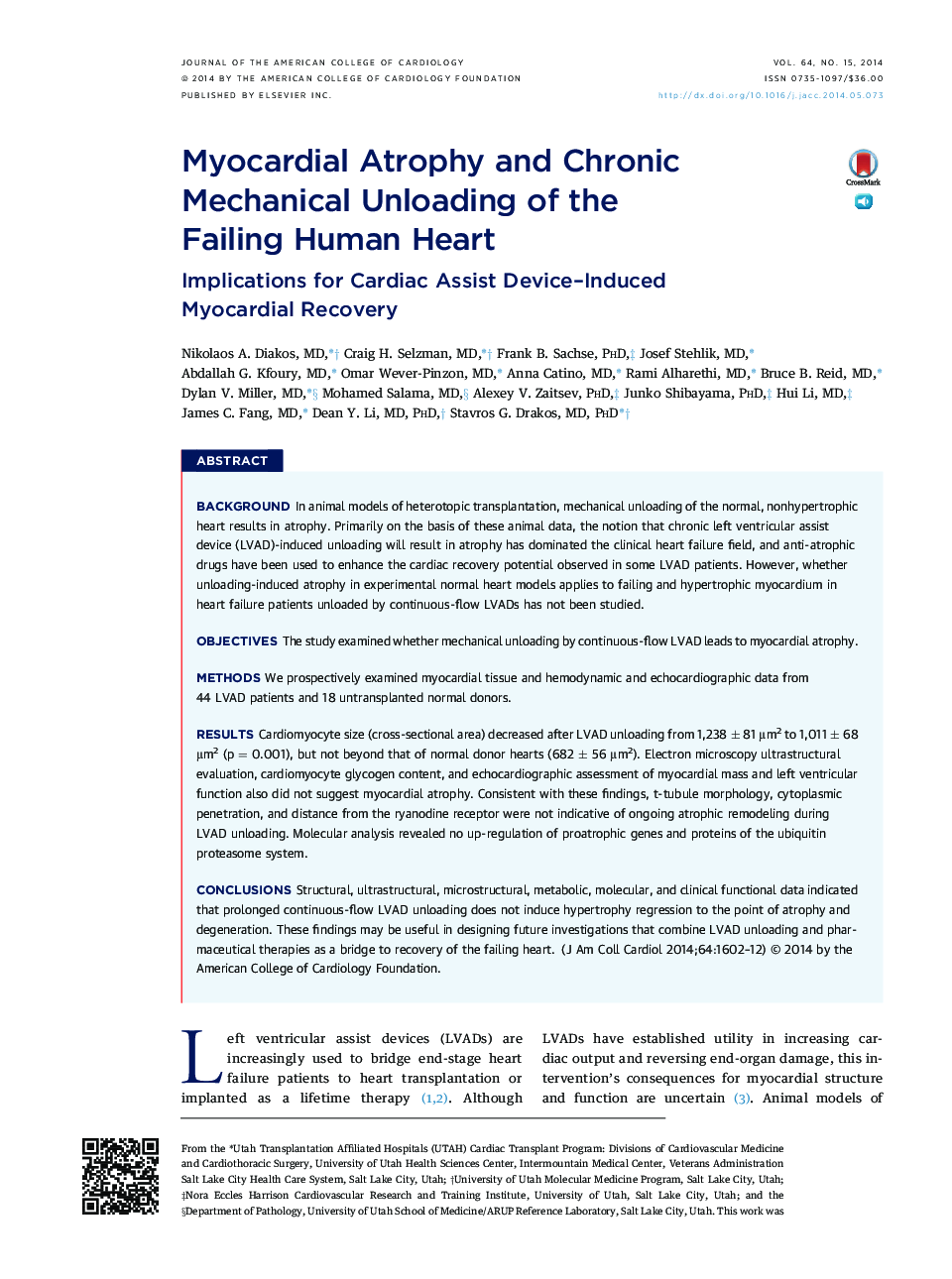| کد مقاله | کد نشریه | سال انتشار | مقاله انگلیسی | نسخه تمام متن |
|---|---|---|---|---|
| 2944843 | 1577080 | 2014 | 11 صفحه PDF | دانلود رایگان |
BackgroundIn animal models of heterotopic transplantation, mechanical unloading of the normal, nonhypertrophic heart results in atrophy. Primarily on the basis of these animal data, the notion that chronic left ventricular assist device (LVAD)-induced unloading will result in atrophy has dominated the clinical heart failure field, and anti-atrophic drugs have been used to enhance the cardiac recovery potential observed in some LVAD patients. However, whether unloading-induced atrophy in experimental normal heart models applies to failing and hypertrophic myocardium in heart failure patients unloaded by continuous-flow LVADs has not been studied.ObjectivesThe study examined whether mechanical unloading by continuous-flow LVAD leads to myocardial atrophy.MethodsWe prospectively examined myocardial tissue and hemodynamic and echocardiographic data from 44 LVAD patients and 18 untransplanted normal donors.ResultsCardiomyocyte size (cross-sectional area) decreased after LVAD unloading from 1,238 ± 81 μm2 to 1,011 ± 68 μm2 (p = 0.001), but not beyond that of normal donor hearts (682 ± 56 μm2). Electron microscopy ultrastructural evaluation, cardiomyocyte glycogen content, and echocardiographic assessment of myocardial mass and left ventricular function also did not suggest myocardial atrophy. Consistent with these findings, t-tubule morphology, cytoplasmic penetration, and distance from the ryanodine receptor were not indicative of ongoing atrophic remodeling during LVAD unloading. Molecular analysis revealed no up-regulation of proatrophic genes and proteins of the ubiquitin proteasome system.ConclusionsStructural, ultrastructural, microstructural, metabolic, molecular, and clinical functional data indicated that prolonged continuous-flow LVAD unloading does not induce hypertrophy regression to the point of atrophy and degeneration. These findings may be useful in designing future investigations that combine LVAD unloading and pharmaceutical therapies as a bridge to recovery of the failing heart.
Journal: Journal of the American College of Cardiology - Volume 64, Issue 15, 14 October 2014, Pages 1602–1612
